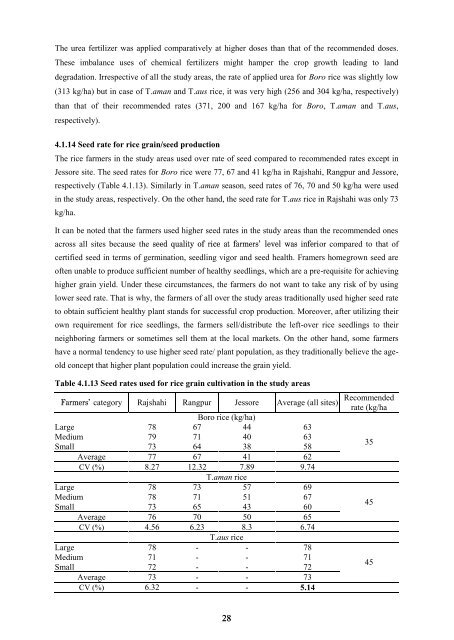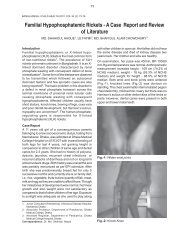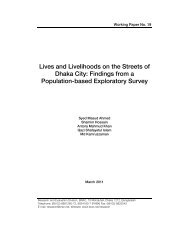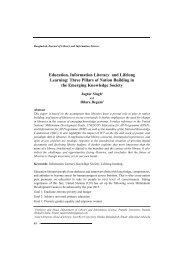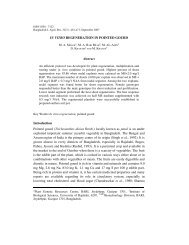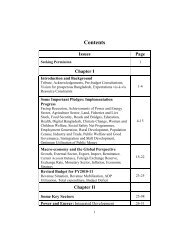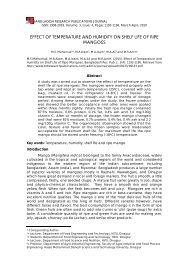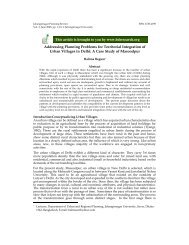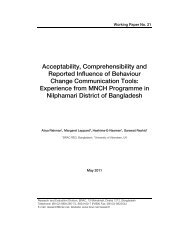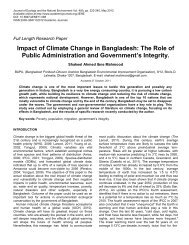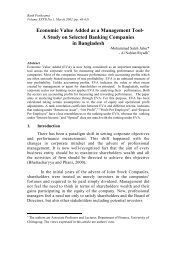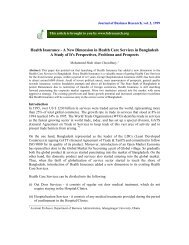Studies on Policy Option for Quality Seed Production and ... - NFPCSP
Studies on Policy Option for Quality Seed Production and ... - NFPCSP
Studies on Policy Option for Quality Seed Production and ... - NFPCSP
Create successful ePaper yourself
Turn your PDF publications into a flip-book with our unique Google optimized e-Paper software.
The urea fertilizer was applied comparatively at higher doses than that of the recommended doses.These imbalance uses of chemical fertilizers might hamper the crop growth leading to l<strong>and</strong>degradati<strong>on</strong>. Irrespective of all the study areas, the rate of applied urea <strong>for</strong> Boro rice was slightly low(313 kg/ha) but in case of T.aman <strong>and</strong> T.aus rice, it was very high (256 <strong>and</strong> 304 kg/ha, respectively)than that of their recommended rates (371, 200 <strong>and</strong> 167 kg/ha <strong>for</strong> Boro, T.aman <strong>and</strong> T.aus,respectively).4.1.14 <strong>Seed</strong> rate <strong>for</strong> rice grain/seed producti<strong>on</strong>The rice farmers in the study areas used over rate of seed compared to recommended rates except inJessore site. The seed rates <strong>for</strong> Boro rice were 77, 67 <strong>and</strong> 41 kg/ha in Rajshahi, Rangpur <strong>and</strong> Jessore,respectively (Table 4.1.13). Similarly in T.aman seas<strong>on</strong>, seed rates of 76, 70 <strong>and</strong> 50 kg/ha were usedin the study areas, respectively. On the other h<strong>and</strong>, the seed rate <strong>for</strong> T.aus rice in Rajshahi was <strong>on</strong>ly 73kg/ha.It can be noted that the farmers used higher seed rates in the study areas than the recommended <strong>on</strong>esacross all sites because the seed quality of rice at farmers’ level was inferior compared to that ofcertified seed in terms of germinati<strong>on</strong>, seedling vigor <strong>and</strong> seed health. Framers homegrown seed areoften unable to produce sufficient number of healthy seedlings, which are a pre-requisite <strong>for</strong> achievinghigher grain yield. Under these circumstances, the farmers do not want to take any risk of by usinglower seed rate. That is why, the farmers of all over the study areas traditi<strong>on</strong>ally used higher seed rateto obtain sufficient healthy plant st<strong>and</strong>s <strong>for</strong> successful crop producti<strong>on</strong>. Moreover, after utilizing theirown requirement <strong>for</strong> rice seedlings, the farmers sell/distribute the left-over rice seedlings to theirneighboring farmers or sometimes sell them at the local markets. On the other h<strong>and</strong>, some farmershave a normal tendency to use higher seed rate/ plant populati<strong>on</strong>, as they traditi<strong>on</strong>ally believe the ageoldc<strong>on</strong>cept that higher plant populati<strong>on</strong> could increase the grain yield.Table 4.1.13 <strong>Seed</strong> rates used <strong>for</strong> rice grain cultivati<strong>on</strong> in the study areasFarmers’ category Rajshahi Rangpur Jessore Average (all sites)Boro rice (kg/ha)Large 78 67 44 63Medium 79 71 40 63Small 73 64 38 58Average 77 67 41 62CV (%) 8.27 12.32 7.89 9.74T.aman riceLarge 78 73 57 69Medium 78 71 51 67Small 73 65 43 60Average 76 70 50 65CV (%) 4.56 6.23 8.3 6.74T.aus riceLarge 78 - - 78Medium 71 - - 71Small 72 - - 72Average 73 - - 73CV (%) 6.32 - - 5.14Recommendedrate (kg/ha35454528


